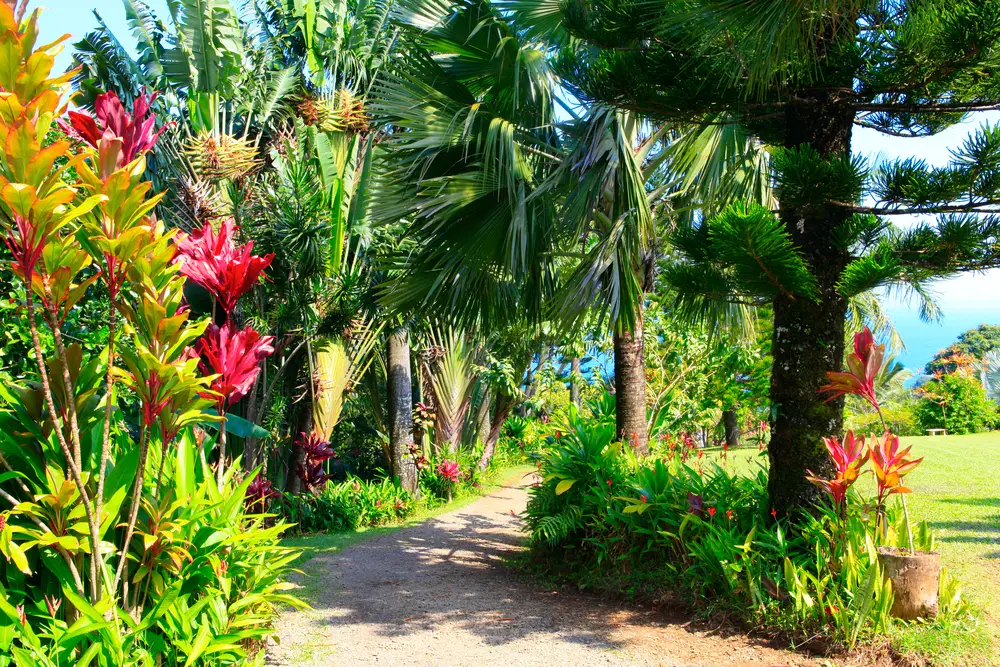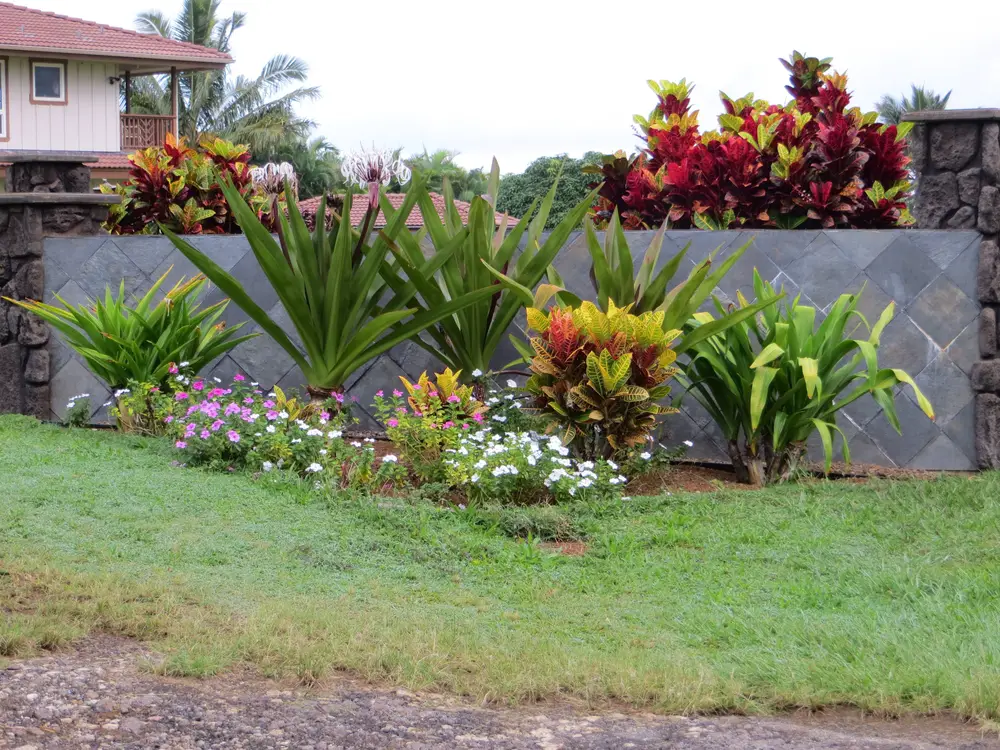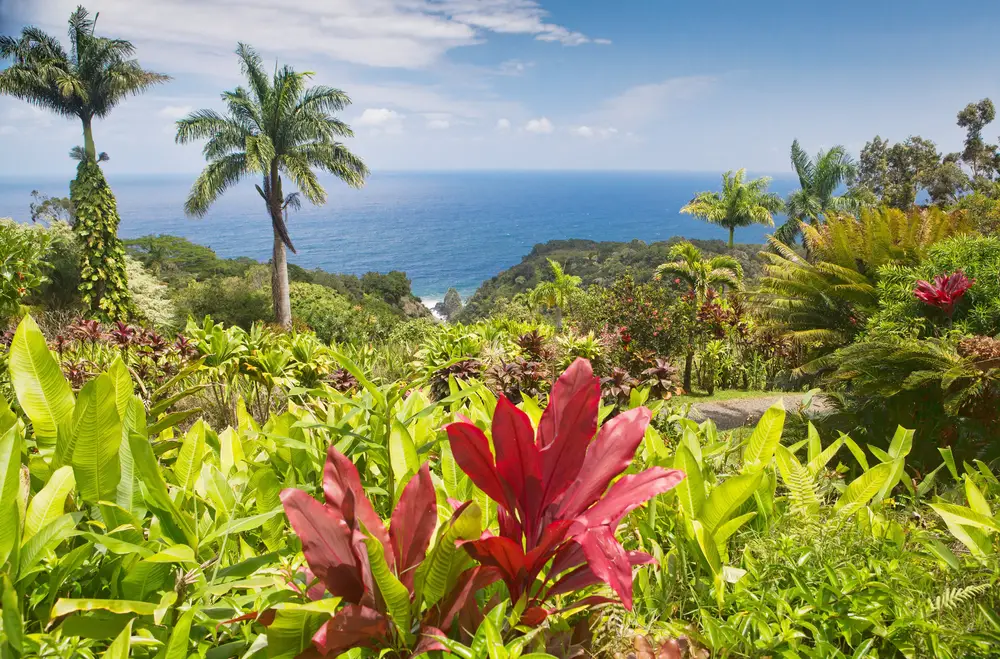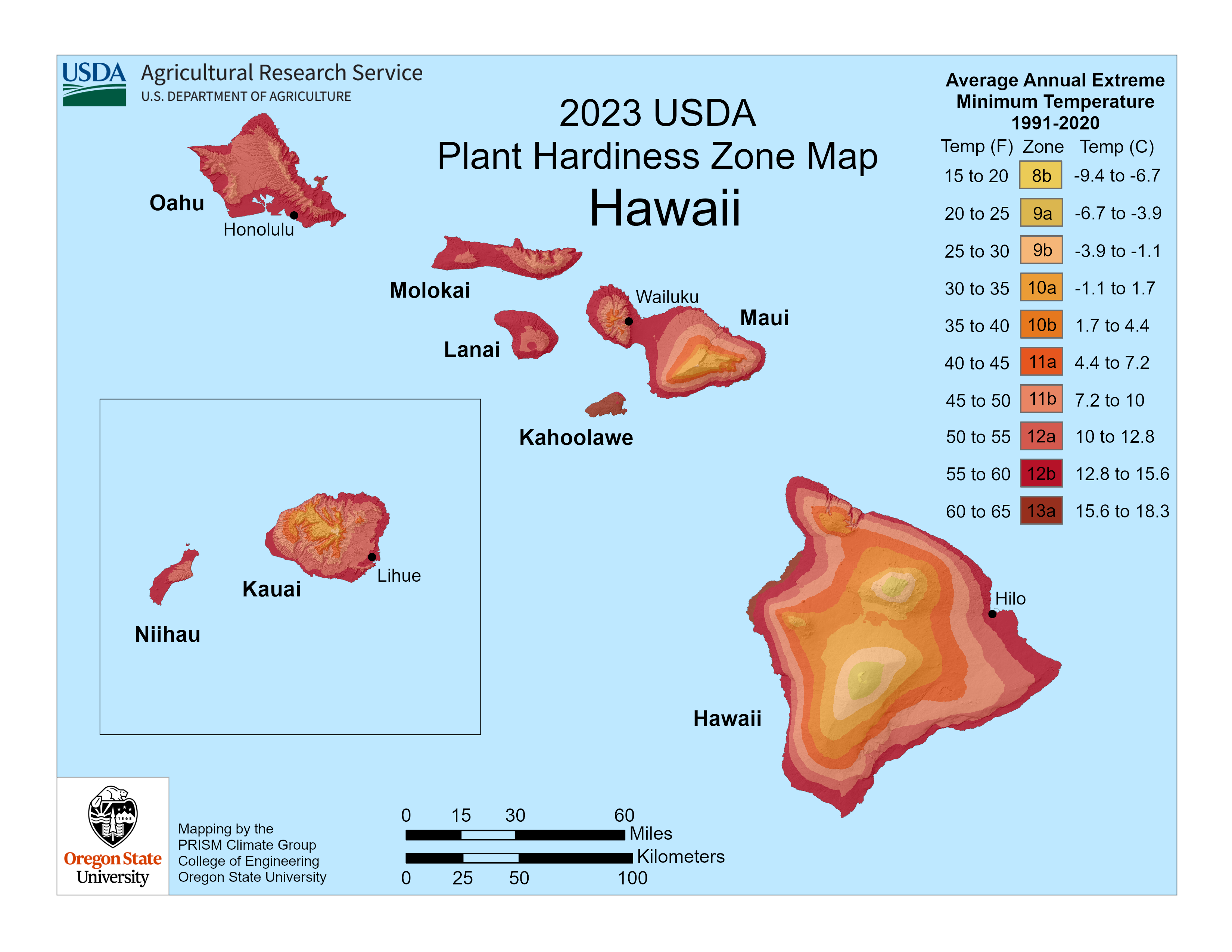Hawai’i Plant Hardiness Zones
The coldest parts of Hawai’i are at the highest altitudes. Gardening on the islands occurs at elevations with warm temperatures to support year-round growth.
So, while there is frost on some of the islands, it is not reaching or affecting gardens. Consequently, we’re listing the frost dates below as N/A.
| USDA Hardiness Zone | Average Annual Extreme Minimum Temperature Fahrenheit (°F) Celsius (°C) | Average last frost date in spring (beginning of the growing season) | Average first frost date in autumn (end of the growing season) |
|---|---|---|---|
| 8b | 15°F to 20°F -9.4°C to -6.7°C | N/A | N/A |
| 9a | 20°F to 25°F -6.7°C to -3.9°C | N/A | N/A |
| 9b | 25°F to 30°F -3.9°C to -1.1°C | N/A | N/A |
| 10a | 30°F to 35°F -1.1°C to 1.7°C | N/A | N/A |
| 10b | 35°F to 40°F 1.7°C to 4.4°C | N/A | N/A |
| 11a | 40°F to 45°F 4.4°C to 7.2°C | N/A | N/A |
| 11b | 45°F to 50°F 7.2°C to 10°C | N/A | N/A |
| 12a | 50°F to 55°F 10°C to 12.8°C | N/A | N/A |
| 12b | 55°F to 60°F 12.8°C to 15.6°C | N/A | N/A |
| 13a | 60°F to 65°F 15.6°C to 18.3°C | N/A | N/A |
Hawai’i Growing Conditions

General Climate
The majority of Hawai’i is characterized by warm, consistent weather all year long. This island nation includes deserts, beaches, and rainforests.
Interestingly, it even has a polar region.
Even more interestingly, you can experience this entire range of conditions on the Big Island of Hawai’i (but not exclusively).
Much of this variability comes from differing elevations.
Temperatures decrease by approximately 3°F (-16.11°C) with each increase in elevation by 1,000 feet (304.8 meters). As such, Hawai’i’s mountains, which begin at sea level and reach almost 14,000 feet (4,267.2 meters), contain a wide range of zones.
All of these regions are within a six-hour drive of one another.
| Area | Elevation | Climate | Details |
|---|---|---|---|
| Coastal regions | Sea level | Dry | -Warmest temperatures -Dry, compared to other regions |
| Inland | Sea level to 3,000 feet (609 meters) | Tropical | -Forested -High levels of rainfall all year |
| Inland | 3,000 feet (609 meters) to 9,000 feet (2743 meters) | Temperate | -Forests, hills -Dry in summer, wet in winter |
| Alpine | 9,000 feet (2743 meters) to 13,000 feet (3962 meters) | Polar | -Coldest areas on the Islands -Snow -At the highest altitudes, permafrost |
Microclimates
USDA plant hardiness zones are an important starting point for your garden, but you’ll also need to consider microclimates.
Microclimates are areas where specific conditions create a climate different from the climate they’re situated in.
Buildings, fences, paved areas, or short hills and valleys can create these microclimates.
They can be as small as a space in your backyard or as large as a city.
In other words, learn about your local conditions from local experts to see if your garden falls into a microclimate.
Hawai’i’s ecoregions (areas dominated by a specific geography and receive uniform precipitation and light) dictate several microclimates across the island state.
The Hawai’ian ecoregions are the Hawai’ian Tropical Dry Forests, Hawai’ian Tropical Rainforests, Hawai’ian Tropical High Shrublands, Hawai’ian Tropical Low Shrublands, and Northwest Hawai’ian Scrub.
The island of Hawai’i is the warmest and wettest, and Kauai is home to the coolest temperatures and is driest.
The west side of all islands is the warmest.
Extreme Weather
Hawai’i doesn’t see a tremendous amount of extreme weather.
However, hurricane season runs from June to the end of November.
Flooding is a concern during storms because not only do waters crash in from the ocean, but also torrential downpours can quickly cause terrestrial water levels to rise, causing temporary cascades off of the mountainsides.
Rising ocean temperatures have acidified ocean waters in recent years, contributing to coral bleaching.
As reefs degrade, so does the protection they give the shore. Without reefs acting as large-scale moving walls to counteract incoming weather, waves hit the shore with even greater force, causing more damage.
Growing Season
You’ll enjoy gardening in Hawai’i all year long. There are only two seasons. The difference between them is slight for most of the land area on the islands.
“Ho’olio,” or winter, is from November to April.
The average daily temperature low is 68°F (20°C).
The high is 79°F (26°C).
“Kau,” or summer, is from May to October.
The average daily temperature low is 75°F (24°C).
The high is 86°F (30°C).
Hawai’i Gardening Tips

Choose The Right Plants
Select plants suitable for Hawai’i plant hardiness zones, AKA its warm and tropical climate. Also, keep in mind you’ll be able to grow all year long.
Native species always thrive without as much care as plants adapted to elsewhere. In fact, Hawai’i’s tropical environment is so rich and supportive of plant life that it’s wise to be particularly careful about propagating (reproducing) introduced species that can become quickly established and upset the islands’ natural biodiversity.
Bring In Soil From Elsewhere
Soil near the ocean is too salty and of poor quality. In other words, it’s unable to sustain healthy and productive growth for many garden plants.
Many solve this problem by bringing soil in from elsewhere on the island. They put this soil in raised garden beds, planters, and grow bags.
Planting this way gives you greater flexibility and growing space. You can put your plants in ideal light and water conditions.
Improve Drainage
Gardeners in Hawai’i often struggle with an overabundance of water.
Too much water leads to root rot and disease—both hurt plant growth.
To combat this, keep a bucket of rocks handy when planting. This way, you can add a handful to every planting container. This ensures water has a path to drain away from roots but not too quickly.
Plant Out (Transplant) Seedlings Instead Of Direct Seeding
Start plants in trays instead of direct seeding (sowing them right into the soil).
Planting out seedlings that are several weeks old instead of allowing germination (a seed growing into a seedling) to occur in the ground. This gives them a better opportunity to survive snails and slugs.
Monitor Daily (And Treat) For Pests And Diseases
Warmth and moisture are good for growing gardens but also increase the likelihood of pest insect populations and disease.
Knowing this, it’s best to check your garden daily. This allows you to treat any pests or diseases you spot right away. Failure to do so lets them take hold and can cause irreparable damage to your plants.
In addition to watching for plant damage caused by pests and diseases (limp leaves, discoloration, chewed holes, etc.), it is helpful to become familiar with common pests of certain plants and examine foliage for their presence.
If caught quickly enough, ecologically friendly solutions such as removing pests by hand, treating them by spraying soapy water, and applying diatomaceous earth (causes insects to dry out and die) in the soil around the plant may be sufficient to mitigate further problems.
Regularly prune out all damaged, diseased, or dead foliage and dispose of it accordingly.
Prevention also greatly helps.
For example, regularly cleaning tools and equipment often used in gardens helps. When working in gardens, cleaning removes the chance for them to spread harmful pathogens (disease-causing organisms).
Consult With Local Professionals
Consulting with local gardening professionals allows you to benefit from their experience with your area’s conditions, the plants that do well there, which pests are commonly present, how to manage them, and overall best practices. They’ll also be able to help you with additional suggestions for the Hawai’i plant hardiness zones.
Hawaii Plant Suggestions

Trees
- Niu (Cocos nucifera)
- Koa (Acacia koa)
- Ohi’a lehua (Metrosideros polymorpha)
Shrubs
- Hawaiian Hibiscus (Hibiscus brackenridge) (Hawai’i’s state flower)
- Ti Plant (Cordyline fructose)
- Naio (Myoporum sandwicense)
Flowers
- Pikake (Jasminum sambac)
- Gardenia (Gardenia brighamii)
- Plumeria (Plumeria rubra)
Vegetables
- Tomatoes (Solanum lycopersicum)
- Peppers (Capsicum annuum)
- Sweet potato (Ipomoea batatas)
Herbs
- Mamaki (Pipturus Albidus)
- Noni (Morinda citrifolia)
- Kava (Piper methysticum)
Spices
- Turmeric (Curcuma longa)
- Clove (Syzygium aromaticum)
- Black Pepper (Piper nigrum)
Fruits
- Banana (Musa acuminata)
- Papaya (Carica papaya)
- Pineapple (Ananas comosus)
Succulents
- Ihi (Portulaca molokiniensis)
- Hinahina (Argyroxiphium sandiwicense)
- Ala’ala wai nui (Peperomia tetraphylla)

